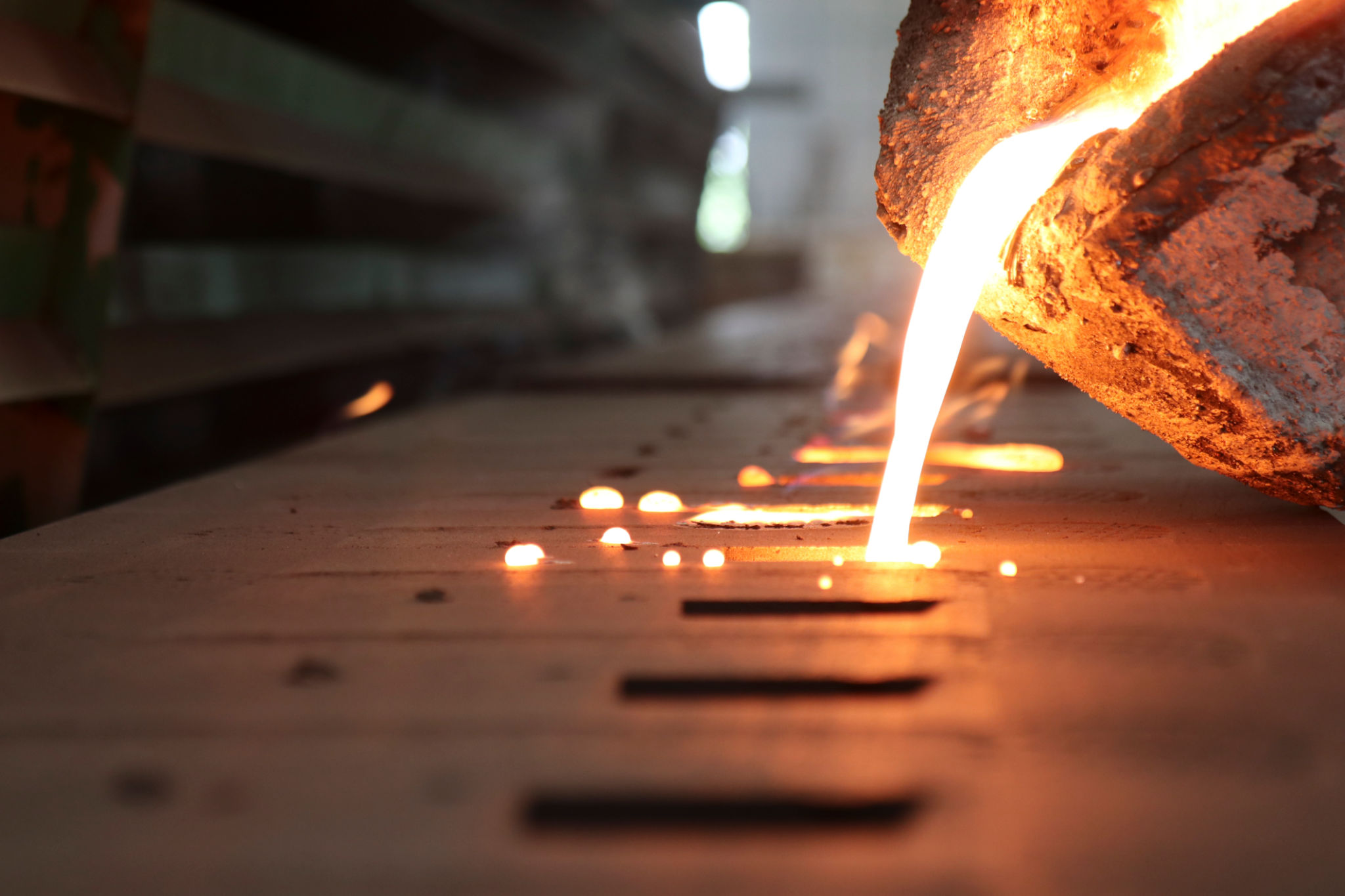Understanding the Metal Casting Process: A Comprehensive Guide
Introduction to Metal Casting
Metal casting is an ancient technique that has been used for centuries to create intricate metal components and structures. This process involves pouring molten metal into a mold to achieve a desired shape. Understanding the metal casting process is essential for industries ranging from automotive to aerospace, where precision and durability are paramount.

The Basics of Metal Casting
The metal casting process can be broken down into several key stages. Initially, a pattern is created, which is a replica of the object to be cast. Patterns can be made from various materials such as wood, plastic, or metal. Once the pattern is ready, it is used to create a mold, typically made from sand or ceramic material.
Next, the selected metal is melted in a furnace until it reaches a liquid state. The molten metal is then carefully poured into the prepared mold. After cooling and solidification, the mold is removed, revealing the cast metal part. This final product may undergo additional processes like machining or finishing to meet specific requirements.
Types of Metal Casting Processes
There are several methods of metal casting, each suited to different applications and materials. The most common types include:
- Sand Casting: Utilizes sand-based molds, ideal for larger and more complex shapes.
- Die Casting: Involves forcing molten metal into a mold cavity under high pressure, suitable for high-volume production.
- Investment Casting: Also known as lost-wax casting, provides excellent surface finish and accuracy.
- Centrifugal Casting: Used primarily for cylindrical parts, where molten metal is poured into a rotating mold.

Advantages and Disadvantages of Metal Casting
Metal casting offers numerous advantages, including the ability to produce complex shapes that would be difficult or impossible with other manufacturing methods. It is also cost-effective for large-scale production, as molds can be reused multiple times.
However, there are some limitations to consider. The initial setup can be expensive, especially for intricate designs requiring high precision. Additionally, some casting processes may result in defects like porosity or shrinkage if not carefully controlled.
Applications of Metal Casting
The versatility of metal casting makes it suitable for a wide range of applications. In the automotive industry, cast metal parts are used in engines, transmissions, and suspension systems. Aerospace manufacturers rely on casting for components like turbine blades and landing gear.

Beyond these industries, metal casting finds use in the production of household items, art sculptures, and even medical devices. Its ability to tailor materials and processes to specific needs makes it an invaluable tool in modern manufacturing.
Quality Control in Metal Casting
Ensuring quality in metal casting is crucial to producing reliable and durable products. This involves rigorous testing and inspection at various stages of the process. Techniques such as non-destructive testing (NDT) are employed to detect internal defects without damaging the cast part.
Additionally, maintaining strict control over variables like temperature and cooling rates helps minimize defects and achieve consistent quality. Continuous improvement in technology and methods further enhances the precision and efficiency of the casting process.
Future Trends in Metal Casting
The metal casting industry continues to evolve with advancements in technology and materials science. One emerging trend is the integration of digital tools like computer-aided design (CAD) and simulation software to optimize mold design and predict outcomes with greater accuracy.

Furthermore, research into new alloys and sustainable materials promises to expand the capabilities and applications of metal casting even further. As environmental concerns grow, the industry is also exploring more eco-friendly practices to reduce waste and energy consumption.
Conclusion
Metal casting remains a cornerstone of manufacturing due to its flexibility and ability to produce complex and precise components. By understanding its processes, types, and applications, industries can continue leveraging this ancient technique to meet modern demands efficiently and sustainably.
